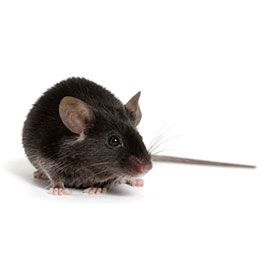Site-specific TARGATT™ Humanized ACE2 Mouse Models – Available Now
Advantages of ASC’s TARGATT™ Humanized ACE2 (hACE2) mouse model for COVID-19 research:
- Full length human ACE2 gene
- Lung alveolar epithelium-specific hACE2 expression driven by K18 promoter (makes the mice more susceptible to the virus)
- Site-specific integration into a well characterized safe harbor locus: Rosa26 or H11
- Avoids problems associated with random integration such as gene silencing, disruption of endogenous genes
- Engineered in the widely used and well-characterized C57BL/6J mouse strain
- Mouse models can be shipped worldwide
Ordering information:
- Price*: $1000 (USD) per mouse; Minimum order of 10 mice
- Age: 4-8 weeks
- Your orders can include both hemizygous male and female mice
* Does not include shipping fees
Researchers around the world are struggling to get a handle on the pathogenic mechanism of the SARS-CoV-2 virus while racing to develop vaccines and therapeutics to stop the COVID-19 pandemic. To aid in this monumental effort, Applied StemCell (ASC) has generated a disease-relevant humanized ACE2 (hACE) Mouse Models using its proprietary site-specific TARGATT™ integration technology that will benefit the study of the viral pathogenesis as well as to evaluate therapeutic measures for the severe respiratory illness associated with the virus.
ASC’s TARGATT™ hACE2 mouse model contains a full length human ACE2 coding sequence driven by the K18 epithelial-specific promoter at a well-characterized genomic safe harbor locus (mH11 or Rosa26). Studies using the SARS-CoV and SARS-CoV-2 viruses have indicated that the K18-promoter driven expression of hACE2 increases the severity of viral infection and pathogenesis, similar to that seen in the human scenario and when compared to mACE2 or CAG promoter driven expression. Superior to an earlier model, in which the K18-hACE2 transgene was randomly integrated into an uncharacterized locus with multiple copy numbers, ASC’s hACE2 model utilizes the site-specificity of the TARGATT integrase to knockin the transgene into a safe harbor locus without disrupting the mouse genome and copy number induced gene silencing.
Table Comparing the ACE2 Mouse Models Available at ASC:
|
|
Catalog # |
Genetic Modification |
Modification Method |
Modification locus |
Promoter |
Mouse Strain |
Availability |
|
Humanized ACE2 – H11 |
580-1 |
Knockin |
TARGATT™ |
mHipp11 (safe harbor) |
K18 |
C57BL/6 |
Available now |
|
Model Characteristics Human ACE2 gene driven by the epithelial-specific K18 promoter, inserted at a genomic “hotspot” (H11 locus) to enable a higher expression in the lungs. This could increase susceptibility of the hACE2 mice to SARS-CoV-2 infection. |
|||||||
|
Humanized ACE2 – Rosa26 |
580-2 |
Knockin |
TARGATT™ |
mRosa26 (safe harbor) |
K18 |
C57BL/6 |
Available now |
|
Model Characteristics Human ACE2 gene driven by the epithelial-specific K18 promoter, inserted at a genomic “hotspot” (Rosa26 locus) to enable a higher expression in the lungs. This could increase susceptibility of the hACE2 mice to SARS-CoV-2 infection. |
|||||||
|
Humanized ACE2 |
ASHU-200218 |
Knockin |
CRISPR/Cas9 |
mACE2 |
mAce2 |
C57BL/6 |
Available now |
|
Model Characteristics A human ACE2-flag-Wpre-pA expression cassette was inserted at the mAce2 start codon site. |
|||||||
|
Ace2-(2A-CreERT2) |
ASKI-200187 |
Knockin |
CRISPR |
mACE2 |
mACE2 |
C57BL/6 |
Available now |
|
Model Characteristics A 2A-CreERT2-WPRE-polyA expression cassette was knocked into the 3’ end of the mouse Ace2 gene. |
|||||||
|
ACE2-KO |
ASCKO-190906 |
Knockout (deletion of exons 3-7) |
CRISPR/Cas9 |
mAce2 |
mAce2 |
C57BL/6 |
Available now |
|
Model Characteristics Expresses a truncated protein. |
|||||||


